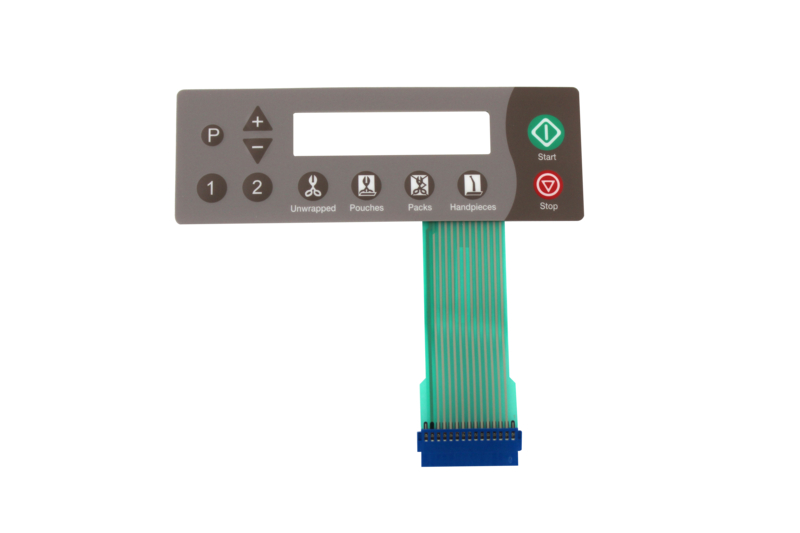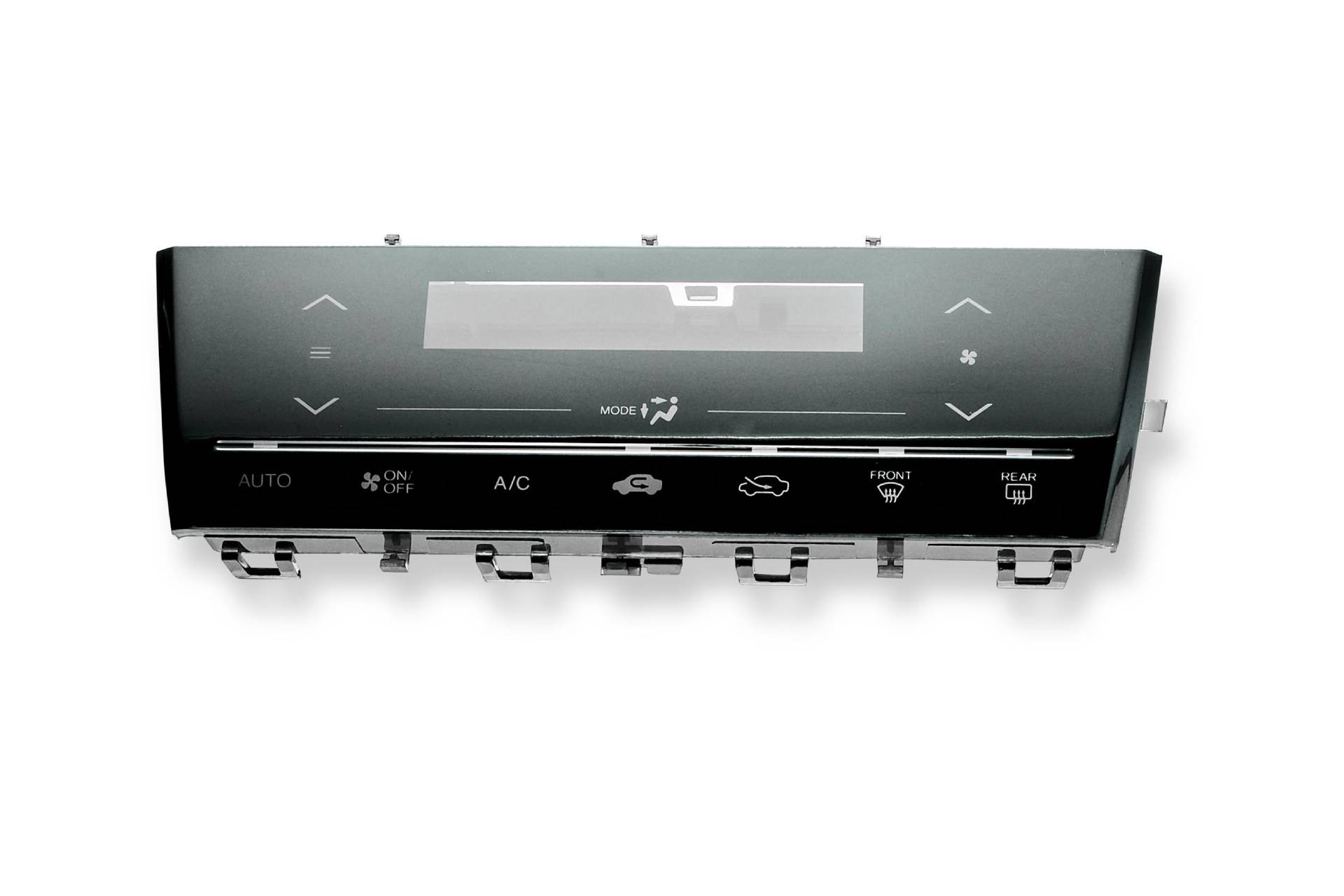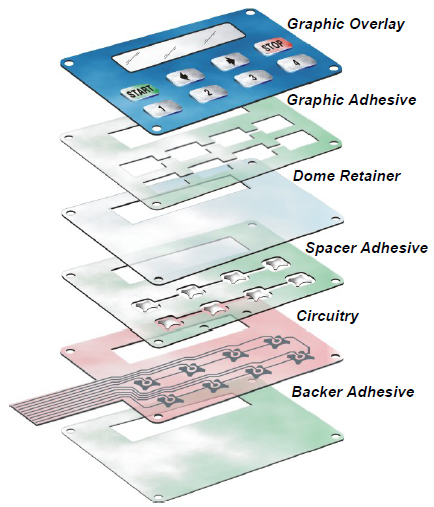You’ll notice the difference when working with a top-tier membrane switch manufacturer.
You’ll notice the difference when working with a top-tier membrane switch manufacturer.
Blog Article
Everything About Membrane Layer Change: Recognizing Its Style and Capability
When you believe concerning the control user interfaces in modern devices, membrane switches often come to mind. Let's discover what collections membrane layer switches over apart from other control systems.
What Are Membrane Layer Buttons?

Their seamless nature makes them simple to clean and resistant to dust and moisture, a crucial function in several atmospheres. Membrane layer buttons can likewise be personalized relating to shape, size, and graphics, permitting suppliers to develop unique user interfaces customized to details items. And also, they're lightweight and thin, which assists in lessening the total bulk of gadgets. In general, membrane switches play a significant duty in enhancing individual experience across a vast array of applications.
How Membrane Layer Switches Over Work
When you push a key on a membrane layer switch, it turns on a simple yet reliable system. membrane switch manufacturer. The top layer, usually made of adaptable product, presses down onto a conductive layer under it.
You'll discover that the tactile responses differs based upon the button design, using either a soft click or an extra obvious action. When you launch the secret, the membrane layer go back to its original setting, reopening the circuit and quiting the signal. This process takes place almost instantly, ensuring a receptive user experience.
Membrane layer buttons are popular because of their longevity and resistance to dirt and moisture, making them optimal for numerous applications, from house appliances to clinical gadgets. Recognizing this operation assists you value their widespread use.
Secret Components of Membrane Switches
Comprehending the essential parts of membrane layer buttons is basic for realizing their capability and design. At the core, you'll locate the graphic overlay, which supplies the aesthetic interface for users. Beneath that, there's a spacer layer that divides the circuit layers, guaranteeing that they don't make contact until pressed. The circuit layer is where the magic takes place; it includes conductive traces that complete the circuit when you press the switch. Another essential aspect is the adhesive support, enabling the button to abide by surfaces safely. Lastly, the protective layer guards versus environmental elements and wear, expanding the button's lifespan. Each part plays a considerable role in making certain reputable efficiency and user communication. By understanding these elements, you'll acquire understanding into how membrane changes operate and their importance in different applications.
Materials Used in Membrane Switch Over Style
The efficiency and sturdiness of membrane layer switches greatly depend on the products utilized in their design. You typically encounter polyester and polycarbonate as primary substratums due to their exceptional toughness and adaptability. These materials resist scratches and chemicals, making them perfect for demanding settings.
The conductive layers commonly utilize silver or carbon, chosen for their dependability and conductivity. membrane switch manufacturer. Silver supplies superior efficiency, while carbon is an affordable choice. For the overlay, you may think about a matte or glossy finish, relying on your aesthetic requirements and individual experience
Make certain to choose adhesives that stand up to ecological aspects like temperature and humidity. Choosing the right materials will certainly assure your membrane button stands the test of time.
Layout Factors To Consider for Membrane Layer Switches
While making membrane switches, it's essential to take right into account various factors that affect their functionality and customer experience. Beginning by concentrating on the layout and switch dimension; make particular they're intuitive and very easy to navigate.
Confirm your layout accommodates environmental variables, like moisture or temperature variants, which can impact performance. By very carefully considering these elements, you'll produce a membrane switch that boosts usability and complete satisfaction.
Applications of Membrane Layer Buttons
Membrane layer switches are versatile parts discovered in various applications, from commercial tools to customer electronics. You'll see their effect in devices that call for sturdy user interfaces and in devices that profit from streamlined designs. Recognizing these applications helps you value the capability and practicality of membrane layer buttons in daily modern technology.
Industrial Equipment Use
When you're looking to boost the capability of commercial tools, membrane buttons offer a dependable option that integrates sturdiness with easy to use layout. These buttons are ideal for extreme settings, supplying resistance to dust, wetness, and chemicals. You'll discover them in control panels for producing devices, HVAC systems, and clinical devices, where accuracy and responsiveness are important. Their low account suggests they fit perfectly right into numerous equipment, conserving beneficial space while preserving ease of usage. With adjustable graphics and backlighting choices, you can produce an intuitive user interface for review drivers, improving efficiency and security. And also, their lengthy life-span minimizes upkeep expenses, making them a wise financial investment for your industrial applications. Accept membrane switches check over here to simplify your operations and improve general performance.
Consumer Electronic Devices Assimilation
In the domain name of customer electronics, membrane switches play a necessary role in enhancing individual communication and gadget capability. Membrane layer buttons additionally assure resilience and resistance to dust and wetness, expanding the lifespan of your electronic devices. By choosing membrane layer switches, you enhance not simply the functionality yet additionally the style of your gadgets, making day-to-day interactions smooth and enjoyable.
Benefits and Disadvantages of Membrane Layer Switches
While membrane layer switches use a variety of advantages, they also come with some drawbacks that you must consider. One considerable benefit is their portable layout, making them suitable for space-constrained applications. They're also affordable, supplying a long lasting service with a low manufacturing expense. In enhancement, their seamless surface area is easy to clean, improving hygiene in environments like healthcare facilities.

Nonetheless, there are drawbacks. Membrane layer buttons can have a much shorter lifespan compared to mechanical switches, especially under heavy use. They can likewise be much less tactile, which may influence individual comments during operation. In addition, if harmed, fixing them can be difficult and often needs total replacement. Ultimately, their level of sensitivity to extreme temperature levels and environmental conditions may restrict their performance in specific settings. Stabilizing these advantages and disadvantages will help you identify if membrane layer buttons are the appropriate fit for your project.
Regularly Asked Questions
How Much Time Do Membrane Switches Generally Last?
Membrane layer changes normally last between 5 to one decade, depending upon usage and ecological problems. You'll intend to assess elements like wear, exposure to wetness, and temperature level variations to assess their longevity properly.
Can Membrane Switches Over Be Personalized for Details Layouts?
Yes, you can personalize membrane switches to fit certain styles (membrane switch manufacturer). You'll have the flexibility to choose shades, shapes, and designs that match your project's demands, guaranteeing they mix seamlessly with your overall visual
What Is the Price Array for Membrane Layer Switch Manufacturing?
The price array for membrane layer switch production typically drops between $1 and $10 each, relying on variables like style complexity, quantity, and materials. You can obtain quotes from makers to discover the most effective option.

Are Membrane Changes Waterproof or Resistant?
Membrane layer switches can be made to be water-proof or immune, depending upon products used and construction approaches. If you require them for Bonuses damp atmospheres, assure you define those demands throughout the style procedure.
Exactly How Do Membrane Layer Changes Contrast to Conventional Switches?
Membrane layer switches are typically thinner and a lot more adaptable than standard switches, using a sleek layout. They're often much easier to cleanse and integrate, yet may not give the responsive feedback you're made use of to with mechanical alternatives.
Conclusion

Report this page